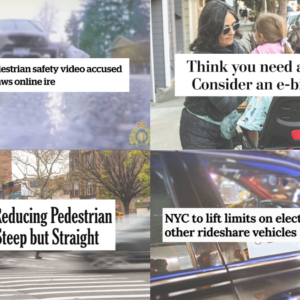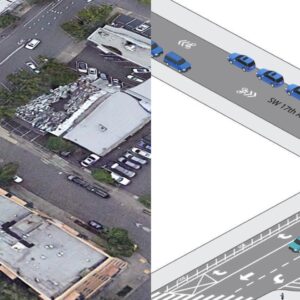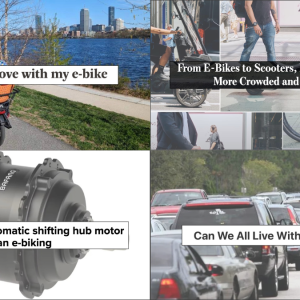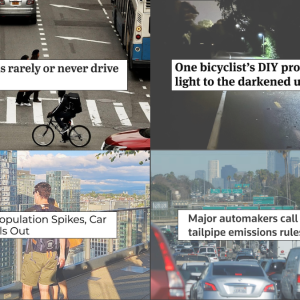
“Drive Less, Save More,” a marketing campaign run by a PR firm for the Oregon Department of Transportation, came under fire this week as Oregon legislators worked to trim the state’s transportation budget.
A freshman Republican lawmaker, House Rep Mike McLane (Medford), led a push with support from several colleagues to end the $2 million (per biennium) expense, saying that the program lacks results and isn’t necessary — especially when lean state revenues mean vital transportation services are underfunded.
“So we tell folks, ‘We’re sorry, get to the hospital yourself, but don’t worry, when you’re in a movie theater you get to watch an ad before the show begins.'”
— Rep. Mike McLane during a speech in Salem yesterday
McLane had support from The Oregonian Editorial Board and fellow members of the Joint Subcommittee on Transportation and Economic Development. That committee forwarded a plan to take the $2 million from Drive Less, Save More and apply it to transportation services for seniors and people with disabilities.
However, in a meeting of the Joint Ways and Means Committee yesterday, McLane learned that his proposal was overruled by the committee co-chairs. Instead of the $2 million transfer, the committee decided to continue funding of the Drive Less, Save More campaign to the tune of $1.5 million and fund transportation for seniors and people with disabilities to the tune of $1 million.
When contacted for an update on his position about this issue, McLane said,
“Despite my efforts and the agreement of the Transportation subcommittee, the co-chairs of the Ways and Means overruled us… I am very disappointed in this result”
In the Ways and Means committee meeting yesterday, McLane made an impassioned speech about why — in large part because of this issue — he would vote “No” on ODOT’s 2011-2013 budget. In that speech (full audio below), McLane said he and many Oregonians have “lost confidence” in ODOT:
“The people, from what I can tell, tend to agree with me that we’ve lost confidence that our money is being spent well… As you know, madame Chair, when you advertise to people that when you drive less you save money, it’s silly.”
McLane pointed out that ODOT spent $757,537 dollars in advertising in 2010, including $50,000 in movie theater ads, which prompted this line in his speech,
“So we tell folks, ‘We’re sorry, get to the hospital yourself, but don’t worry, when you’re in a movie theater you get to watch an ad before the show begins.”
Below are a few more quotes from McLane’s speech, followed by the seven minute audio:
“Oregonians drive less when the price of gas goes up, not when they see a billboard; but we’re prepared today to fund it anyway and to not send that money to the folks that actually have less capacity like the disabled and the seniors…
And now we’re even putting in a budget note where we’ll going to tell ODOT, ‘be sure to manage and look after this Columbia River Crossing’. There’s comes a time that when you can’t trust the messenger, you can’t trust the message…
So madame chair, my frustration grows that we are going to continue to say to people that don’t have the capacity to hire lobbyists [The Oregonian story pointed out that the PR firm behind the campaign worked hard to lobby legislators to keep the program], not the capacity to advocate for themselves, that they have to bear the brunt of this budget problem. And that’s why I’m a no vote, because ODOT can do better.”
Listen to McLane’s speech below:
[audio:mclane_odotbudget.mp3|titles=Rep McLane on ODOT Budget]
While McLane criticizes ODOT’s spending, a recent report by the Pew Center on the States and the Rockefeller Foundation found that Oregon was one of the highest ranked states when it comes to effective use of transportation dollars.
The debate about whether or not ODOT is fiscally responsible won’t be settled any time soon, but McLane’s point about the importance of spending money on marketing campaigns during times of lean budgets is timely. Also, if sources I’ve spoken to are any indication, he has opened up an important conversation about how we set spending priorities.
UPDATE, 7:41 pm: Below are comments I received via email from Tom Brian, the former Washington County Chair (now retired) who advocated for the creation of the Drive Less program back in 2003.
Drive Less/Save More is far more than a “PR” campaign. It is about getting to the public psyche to really make them aware of and think about how we use our automobiles, and how they should be used differently. We spend about $2 billion biennially “building capacity” (ODOT, Cities and Counties) and of course over 95% of that is maintenance and expansion of roads and highways. Why don’t we spend $1.5 million to reduce the demand in the first place?
If we can all reduce our trips by only two a week, that is a 14% reduction. And it does not cost a penny…only that we “think” before we hop in our cars…that we plan our trips and accomplish more errands in the same trip; that we ride share, that we ride bikes, use transit. In a professionally designed and implemented survey, 84% of the citizens said they felt the COULD eliminate, easily, two trips a week (by the way 75-80% of trips are NOT working commutes but other personal and social purposes).
People often talk about the desirability of reduce consumption of fuel, reducing emissions, reducing traffic congestion, etc. So here is a successful program, making progress on those objectives for $1.5 million per biennium versus our $2 billion expenditures focused on roads and highways, and people want to kill the program?
It is an absolute fact that a professionally designed public education and advocacy program, carried out of several years, such as ten years, will make a difference. Maybe some folks are too young to remember the extensive and prolonged media programs to reduce littering, smoking, stopping forest fires by not throwing out cigarette butts, drunk driving and, to increase recycling (the latest campaign is not to use our cell phones and texting while driving). Doesn’t the public “already know” what the right thing to do is in each of these cases? But it took a prolonged media and public education campaign to instill these values with the public, including young people as they are growing up and bringing their values into focus.
So, after only a few short years, folks are ready to kill the Drive Less/ Save More program and claim victory while we are still over 75% Single Occupancy Vehicle and making 10 to 14 trips a day per household? I am all for senior/disable transportation. That is why I have supported and helped obtain financing for Ride Share (senior/disabled vans and operations) and of course the current cigarette tax dedicated to senior/disabled transportation used by transit agencies. I do not know what the transportation spending is for senior/disabled but I know it is in the many tens of millions statewide, perhaps approaching $75 to $100 million system wide?
I think it would be foolish to shut down the one, small program we have going that advocates for less driving and reduction of demand for more highway lanes. We need a little balance in our thinking and approach. One way to put it is that we need a consistent message to create the same kind of social pressure on smarter (and less) use of our cars as was developed about littering, recycling, drunk driving, smoking, etc. It would be extremely shortsighted to shut down the Drive Less/Save More program.






Thanks for reading.
BikePortland has served this community with independent community journalism since 2005. We rely on subscriptions from readers like you to survive. Your financial support is vital in keeping this valuable resource alive and well.
Please subscribe today to strengthen and expand our work.
I have to say that I agree with the Republican for once, at least on the outcome if not the reasoning.
IMHO, this throws a little money at the problem to appease the active transportation advocates but does little if anything to address the core problem of barriers to use of the streets for active transportation.
In these times, I’m happy to see the money go to more pressing needs.
I can’t speak to the effectiveness of the program, but I can say from personal observation that most people I know don’t think about grouping trips typically. Whenever I’m with a group of friends and I optimize our route or suggest grouping stops, they look at me funny or say “that’s a good idea”.
Chris I,
maybe the messaging is off? Maybe your friends are less likely to need reminding of the financial implications of driving than the climate implications. Other countries are not approaching this as being about saving money (private/consumer) but about saving the climate (public/citizen). Those campaigns as far as I can tell are having more of an effect than this one at least among your friends.
But we shouldn’t be surprised.
http://www.wwf.org.uk/research_centre/research_centre_results.cfm?uNewsID=2224
from the introduction:
“Weathercocks and Signposts critically reassesses current approaches to motivating environmentally-friendly behaviour change. Current behaviour-change strategies are increasingly built upon analogy with product marketing campaigns. They often take as given the ‘sovereignty’ of consumer choice, and the perceived need to preserve current lifestyles intact. This report constructs a case for a radically different approach. It presents evidence that any adequate strategy for tackling environmental challenges will demand engagement with the values that underlie the decisions we make – and, indeed, with our sense of who we are.”
McLane is from Powell Butte, repping district 55.
Perhaps he’d like to take that 2 million and use it to widen a few residential streets in his distric to fout lanes?
Considering I have never heard of the Drive Less Save More program, it makes me wonder what the 2 million was doing anyway?
I mean really this is the first I have heard of it and I tend to pay attention….
We certainly do need more funding to go to people with disabilities and the elderly, as it surprises me how these people function at all on what is provided, as far as assistance.
It does seem silly the government is advertising to drive less and save more. Seems they should just focus on changing the structure of our streets (like they do and it’s great) to encourage it. I think maybe our politicians want us to know they care, rather than are trying to change people’s lifestyles.
I hate it when the govt. wastes my tax money on things that are not “why we pay taxes”. We don’t want to be a nanny state where we have a dictator telling us everything we can and cant do. They are allready telling us what kind of lightbulbs to use, what kind of bags to use… Just get your govt, off our freedom
I agree with the intent of the Drive Less Save More program. I don’t know if this program is terribly successful. I went to one of their events and ti was ok . Then I found their emails to be unintelligent and annoying.
A better program is the Community Cycling Center’s “Create a commuter”. In this they teach potential bike commuters how to commute by bike.
I’m sure there are many other better programs out there as well. Or money could be spent on bike/pediastrian infrastructure and traffic calming (i.e. curb extensions, roundabouts, etc) of course.
Josh
10 comments to this thread, and of them, you, Josh, are the only person writing that has said they’ve actually seen some of what the ‘Drive Less Save More’ is doing, or has gone to one of the program’s events. Maybe…before reflexively deciding to kill this program, people should first, at least put some effort into finding what it actually has been doing.
House Rep. Mike McLane’s comments, or a summary of his views included in Maus’s story do not substantiate his claims that…as maus says he’s of his opinion, “…the program lacks results and isn’t necessary — especially when lean state revenues mean vital transportation services are underfunded. …”. So basically, based on that extent that McLane’s expressed knowledge of the ‘Drive Less Save More’ program is presented to readers of this weblog, it would seem that McLane doesn’t really know anything at all about the results either produced or not produced by this program he wants to kill.
Tom Brian’s comments sent to Maus and reposted in maus’s story, suggests he understands the ability good information and public awareness programs can have for awakening the public to the need to recognize and do something tangible, on an individual level in response to pressing community and social problems.
In Brian’s comments here, though he mentions ‘results’ achieved by ‘Drive Less Save More’, his description of what those results have been are general and indirect. If he actually knows, it would be helpful for him to say specifically what ‘Drive Less Save More’ has produced in the way of results, that he believes justifies the program’s continuation.
By the way, has anyone taken a look at the program’s website (link is opening phrase of maus’s story.)? It’s nice looking, but could be improved if the information offered there were more substantial.
Correction: “…as maus describes McLane as effectively saying: “…the program lacks results and isn’t necessary — especially when lean state revenues mean vital transportation services are underfunded. …”.
Let’s see. $2mil spent on marketing (sounds like a subsidy to movie theaters and ad agencies, if anything). A signed/lighted pedestrian cross walk costs $38,000. That works out to about 52 crossings for the price tag of the ads.
Do we really think that 52 crossings installed every single year will make less of an impact on saving lives than telling people to drive less?
This is the basic definition of stupid public spending. Bigtime.
Total waste of money. People are fully aware of the benefits of not driving. I am; I just choose to drive most of the time.
The politicians that created this program are probably enriching themselves or some of their buddies.
Pure government waste and corruption.
I took part in several of the “Drive less – Safe more” events. One thing that hasn’t been mentioned is that the readers of Bikeportland are probably not the target group for this campaign — it’ s targeted towards people who still use their car for most transportation needs, but begin to have an awareness that it might have to change… So the baby steps the campaign does seem silly to most people in the bike community, but it’s goal is not too alienate, but to draw in…
I got $30 in coupons for recording my commutes on DriveLessSaveMore for a couple of months one spring / summer – three good lunches downtown at no cost and cash back each time (change for $10 coupon). Sweet 🙂